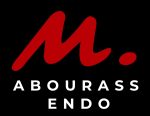Shop Now
Microorganisms in closed periapical lesions
The purpose of this study was to investigate the microor ganisms of strictly selected closed periapical lesions associated with both refractory endodontic therapy and pulpal calcification. Definitive criteria were established that assured complete clinical isolation of the periapical lesion from the oral and periodontal environment. A total of 13 criteria-referenced lesions were selected from 70 patients with endodontic surgical indications. A well controlled culturing method was used in all cases and samples were taken by one clinician at three separate sitesduring each surgery. Samples taken at the surgical window and within the body of the lesion served as controls , whilst a third sample was taken at the apex. In all 13 cases, samples taken from the apex vielded mic roorganisms comprising 63.6% obligate aerobesand36.4% facultative anaerobes. Prevalence of the isolated species was 31.8% for Actinomyces sp., 22.7% Propio11ibacterlum sp., 18.2% Streptococcus sp., 13 .6% Staphlyococcus sp., 4.6% . Porphyromonas gingivalis, 4.6% Peptostreptococcus micros and 4.6% Gram-negative enterics. The results of this investigation indicate that closed periapical lesions associated with calcified teeth or those resistant to root canal treatment harbour bacteria. The inability to eradicate all root canal microorganisms during root canal treatment, along with anatomical factors, may allow further bacte rial colonization of the root apex and surrounding periapical tissues, and consequently prevent healing.
$0.00
| Langugage | English |
|---|---|
| Pages | 9 |


Reviews
There are no reviews yet.